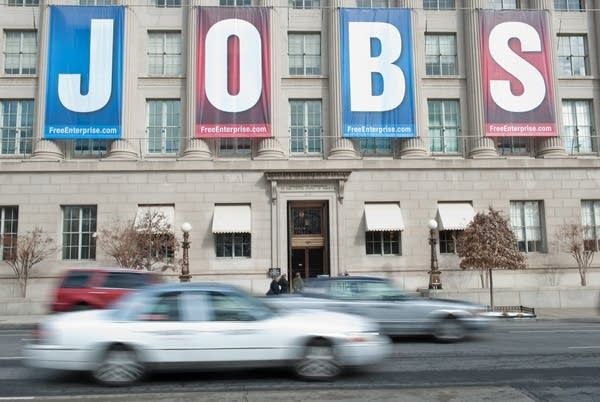Unemployment applications hold at 4-year low

By CHRISTOPHER S. RUGABER, AP Economics Writer
WASHINGTON (AP) -- The number of people seeking unemployment aid was unchanged last week and the four-week average of applications fell to its lowest point in four years. The figures add to evidence that show the job market is improving.
Applications stayed last week at a seasonally adjusted 351,000, the Labor Department said Thursday. That's the fewest since March 2008, when the country was just a few months into the recession.
The four-week average, which smooths week-to-week fluctuations, dropped for the sixth straight week to 359,000. That's also the lowest since March 2008.
Create a More Connected Minnesota
MPR News is your trusted resource for the news you need. With your support, MPR News brings accessible, courageous journalism and authentic conversation to everyone - free of paywalls and barriers. Your gift makes a difference.
Applications have fallen steadily since last October. The average has declined 13.5 percent since then. When applications drop consistently below 375,000, it usually signals that hiring is strong enough to lower the unemployment rate.
Economists said the level suggests the economy will see another strong month of hiring in February, similar to the average net gain of about 200,000 in the previous three months.
The report covers the week that the government surveys companies to calculate how many jobs have been added or lost for the monthly employment report. Economists frequently pay close attention to the application figures during those so-called "survey weeks." If applications fall from one month's survey week to the next, it could signal a stronger jobs report.
Weekly applications have fallen only 4,000 compared to last month's survey week. But the four-week average has dropped 20,000.
That "bodes well for the February payroll report," said Jennifer Lee, an economist at BMO Capital Markets. "The positive trend continues."
The number of people receiving unemployment aid also fell. The total benefit rolls dropped to 7.5 million in the week ended Feb. 4, the latest data available. That's down from nearly 7.7 million in the previous week.
Hiring has picked up in recent months. The economy added 243,000 net jobs in January, the most in nine months. The unemployment rate dropped for the fifth straight month, to 8.3 percent -- the lowest in nearly three years.
Healthier economic growth is spurring greater job growth. The economy expanded at an annual rate of 2.8 percent in the final three months of last year -- a full percentage point higher than the previous quarter.
Most economists expect growth will slow in the current quarter, because companies won't need to rebuild their stockpiles of goods as much as they did last winter. That means less production of goods.
But there are signs that the economy is still expanding at a healthy pace. Factory output got off to a robust start this year, and it ended last year with the fastest growth in five years, the Federal Reserve said last week.
Factories are adding jobs to keep up with the extra demand. Manufacturers added a net gain of 50,000 jobs last month, the most in a year.
Still, the job market has a long way to go before it fully recovers from the damage of the Great Recession. Nearly 13 million people remain unemployed, and 8.3 percent unemployment is painfully high.
One reason the unemployment rate has fallen is that many people have given up looking for work. The government only counts people as unemployed if they are actively searching for a job.
(Copyright 2012 by The Associated Press. All Rights Reserved.)
